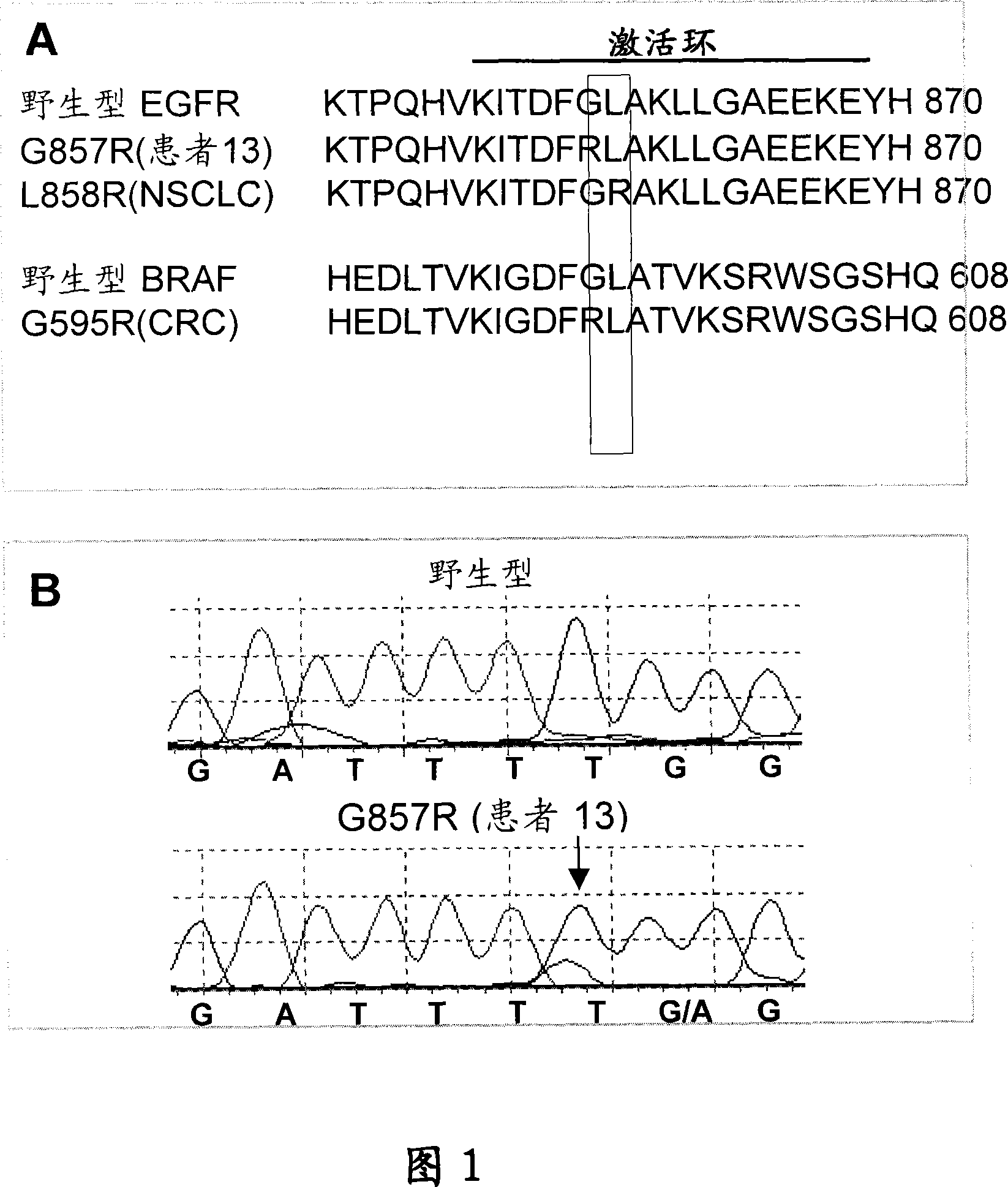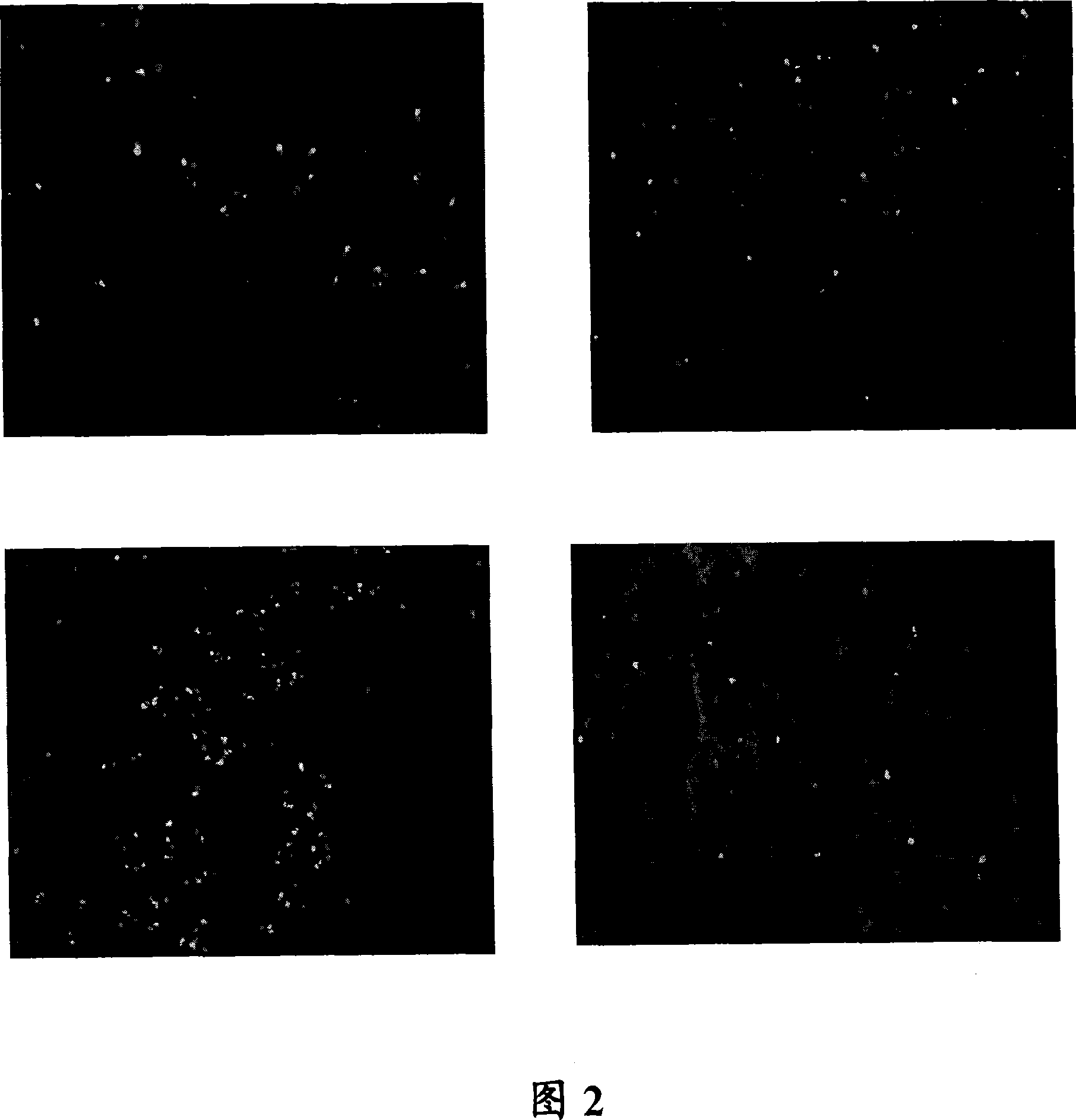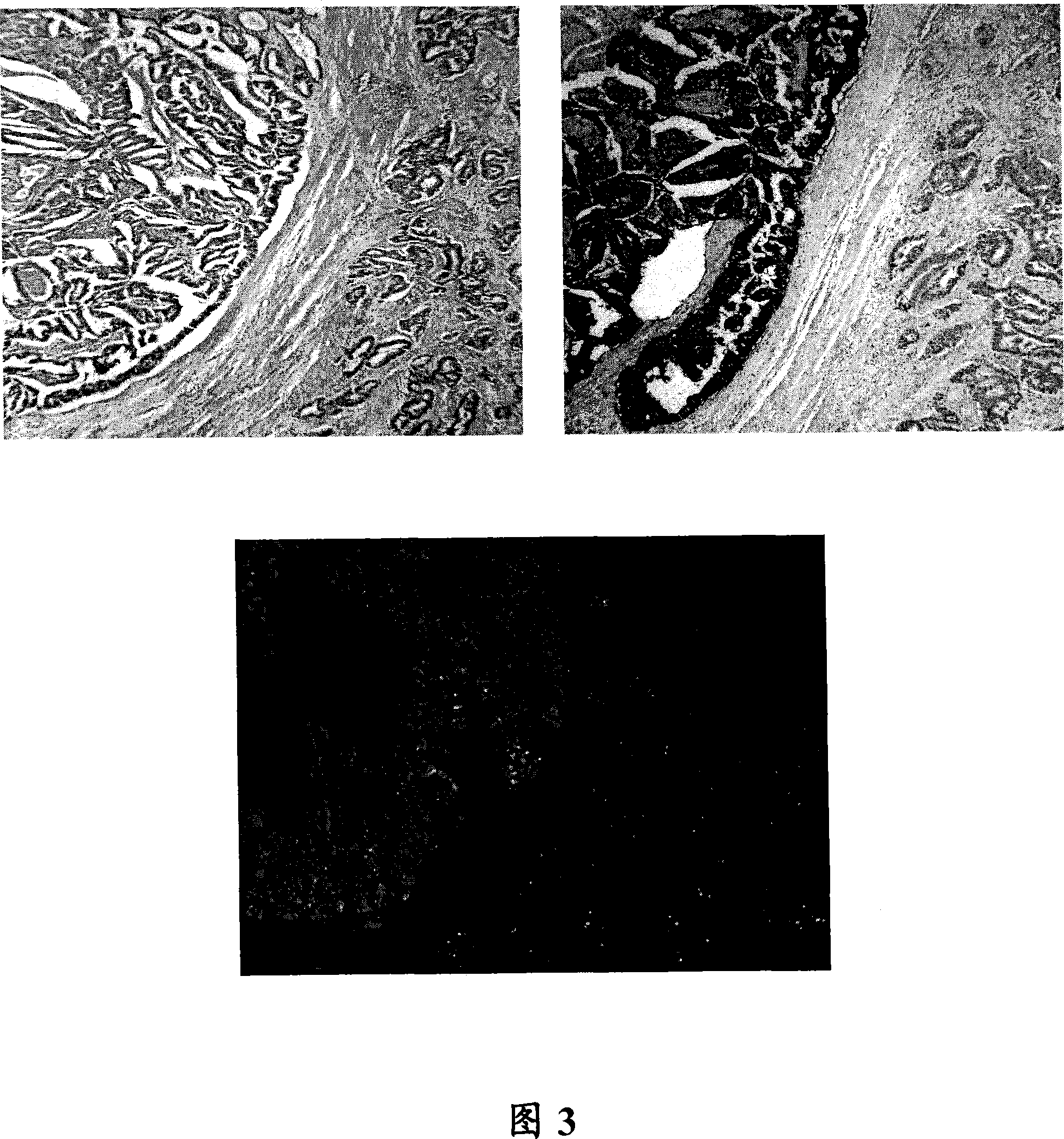Anti-egfr antibody therapy based on an increased copy number of the egfr gene in tumor tissues
- Summary
- Abstract
- Description
- Claims
- Application Information
AI Technical Summary
Problems solved by technology
Method used
Image
Examples
Embodiment 1
[0110] Example 1: Patients and Treatment with Anti-EGFR Monoclonal Antibodies
[0111] Ospedale Niguarda Ca'Granda enrolled patients in a clinical trial for the treatment of EGFR-expressing mCRC with the anti-EGFR moAbs panitumumab or cetuximab, and in these patients we demonstrated radiologically-documented tumor sensitivity to this therapy or Tolerability was evaluated in 31 patients (Table 1). Patient selection was based on the availability of sufficient tumor tissue for the current study. All patients had EGFR-expressing mCRC, manifested as ≥1% EGFR-staining malignant cells, as per clinical protocol (Cunningham et al., 2004, N EngI J Med 351:337-345), in the central laboratory Assessed by IHC with DAKO EGFRPharmDX kit. Cetuximab (chimeric IgG1 moAb; Erbitux , Merck, Milan, Italy) and panumumab (whole human IgG2 moAb; Amgen, Thousand Oaks, CA, USA) both target the ligand-binding domain of EGFR. In addition to the lower incidence of fusion reactions observed with intac...
Embodiment 2
[0112] Example 2: Mutation Analysis
[0113] DNA was extracted from paraffin-embedded samples. 10 slices were prepared for each patient. Additional representative sections were deparaffinized, stained with hematoxylin-eosin, and subjected to detailed morphological analysis. The area showing tumor tissue was marked, and the tissue was extracted with 0.2M NaOH / 1 mM EDTA, which was then neutralized with 100 mM Tris-TE. After extraction, the DNA was purified using the Qiagen PCR purification kit (cat# 28104) according to the manufacturer's instructions. Exon-specific primers and sequencing primers were designed with Primer3 software (http: / / frodo.wi.mit.edu / cgi-bin / primer3 / primer3_www.cgi) and supplied by Invitrogen TM analyze. The primer sequences are: Forward, reverse and sequencing primers for each exon are as follows:
[0114] EGFR-Ex18
[0115] GCTGAGGTGACCCTTGTCTC;ACAGCTTGCAAGGACTCTGG;TGGAGCCTCTTACACCCAGT;
[0116] EGFR-Ex19
[0117] CCCAGTGTCCCTCACCTTC;CCACACAGCAAAG...
Embodiment 3
[0129] Example 3: Analysis of the EGFR gene by fluorescence in situ hybridization (FISH)
[0130]Tissue sections were processed according to the protocol used for the Her2 FISH detection kit (Dakocytomation, Glostrup, DK). The samples were placed in the pretreatment solution at 96°C for 30 minutes, and then digested with trypsin solution for 30 minutes at room temperature. Two-color, two-target FISH assays were performed using the LSI EGFR Spectrum Orange / CEP7 SpectrumGreen Probe (Vysis, Downers Grove, IL). Briefly, tissue sections were overlaid with 10 μL of probe solution, incubated with co-denatured EGFR and CEP7 probes at 75°C for 5 min, and hybridized overnight at 37°C. Both co-denaturation and hybridization were performed sequentially in a microprocessor-controlled system (Hybridizer, Dakocytomation, Glostrup, DK). Stringent washes after hybridization were performed in a 65°C water bath for 10 minutes. After washing twice and drying at room temperature for 15 minutes,...
PUM
 Login to View More
Login to View More Abstract
Description
Claims
Application Information
 Login to View More
Login to View More - R&D
- Intellectual Property
- Life Sciences
- Materials
- Tech Scout
- Unparalleled Data Quality
- Higher Quality Content
- 60% Fewer Hallucinations
Browse by: Latest US Patents, China's latest patents, Technical Efficacy Thesaurus, Application Domain, Technology Topic, Popular Technical Reports.
© 2025 PatSnap. All rights reserved.Legal|Privacy policy|Modern Slavery Act Transparency Statement|Sitemap|About US| Contact US: help@patsnap.com



